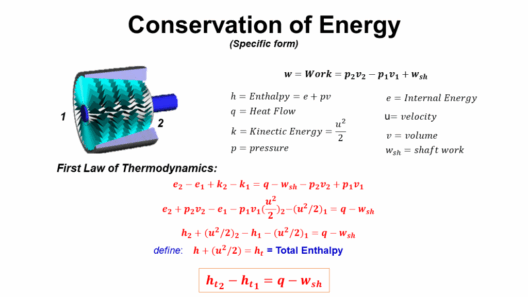Energy conservation refers to the practice of reducing energy consumption through various methods, thereby promoting efficiency and sustainability. It is a crucial component in the broader context of environmental stewardship aimed at mitigating climate change. By examining the different dimensions of energy conservation, we can appreciate its significance and the myriad benefits it presents.
At its core, energy conservation encompasses both behavioral changes and technological advancements that collectively reduce energy use. These elements can be categorized into three primary domains: residential energy conservation, industrial energy conservation, and governmental policy initiatives. Each domain presents distinct strategies and tangible outcomes that contribute to an overarching goal of sustainability.
1. Residential Energy Conservation
Residential energy conservation involves strategies that homeowners can implement to decrease their energy consumption. This includes a range of practices from simple behavioral modifications to the adoption of advanced technologies.
Among the most effective methods is the installation of energy-efficient appliances. Products that bear the Energy Star label are designed to use less energy while still providing optimal performance. Transitioning to LED lighting is another impactful measure, as it consumes significantly less electricity compared to traditional incandescent bulbs.
Behavioral changes within households, such as turning off lights when leaving a room or utilizing natural light whenever possible, can contribute substantially to energy savings. Furthermore, smart home technologies—such as programmable thermostats or energy monitoring systems—allow homeowners to track and adjust their energy usage in real-time, tailoring their consumption patterns to their needs.
Enhancing insulation and sealing leaks in doors, windows, and attics can substantially minimize the need for heating and cooling, thereby reducing overall energy demand. Landscaping can also play a role; strategically planted trees and shrubs can provide shade, lowering indoor temperatures and decreasing reliance on air conditioning.
2. Industrial Energy Conservation
Energy conservation strategies extend beyond the home and into industrial settings, where energy demands are often substantial. Industries can adopt a variety of measures aimed at optimizing energy use, showcasing not just environmental responsibility but also economic prudence.
Conducting energy audits is a salient initial step. These comprehensive assessments identify inefficiencies within manufacturing processes and operational systems. By understanding energy flow, companies can pinpoint areas ripe for improvement. Implementing energy management systems can facilitate ongoing monitoring and data collection, ensuring that energy usage is consistently evaluated.
Furthermore, the shift toward renewable energy sources, such as solar or wind, underscores a commitment to sustainability. Industries that transition to these sources often experience reduced operating costs, alongside the ecological benefits of diminished carbon footprints.
Investing in renewable energy technology, like energy-efficient engines and advanced manufacturing techniques, can enhance productivity and profitability. Collaborative efforts, such as forming energy consortia, allow multiple entities to pool resources and knowledge in pursuit of energy optimization.
3. Governmental Policy Initiatives
Government intervention plays a vital role in facilitating energy conservation on a broader scale. Through policy frameworks and legislation, governments can promote energy-efficient practices at all levels of society.
Tax incentives and investment credits for energy-efficient retrofitting can motivate businesses and homeowners to adopt conservation measures. Additionally, governments may implement regulations that mandate energy efficiency in new construction or significant renovations, fostering a culture of sustainability.
Public awareness campaigns are instrumental in informing citizens about the importance of energy conservation. Educating the populace regarding energy-saving habits, the advantages of energy-efficient products, and the environmental impacts of energy consumption is foundational to fostering a culture of conservation.
Moreover, government partnerships with private organizations can facilitate research and innovation in energy technologies. This collaboration can lead to the development of new materials and processes that enhance energy efficiency across various sectors.
The Benefits of Energy Conservation
Adopting energy conservation practices yields myriad benefits, both immediate and long-term. Principally, reducing energy consumption results in lower utility bills, offering financial relief to households and businesses alike. Furthermore, widespread energy conservation has the potential to alleviate strain on energy grids, particularly during peak demand periods.
From an environmental perspective, conserving energy translates directly into reduced greenhouse gas emissions. A collective commitment to energy efficiency plays a pivotal role in addressing climate change and preserving natural resources for future generations.
Enhanced energy security is another compelling facet of conservation. By decreasing dependency on fossil fuels and promoting the use of renewable energy, nations can bolster their energy independence, thereby reducing vulnerability to market fluctuations and geopolitical tensions.
Challenges to Energy Conservation
Despite its advantages, several challenges impede the widespread adoption of energy conservation practices. One significant barrier is the initial cost associated with energy-efficient technologies. Although long-term savings are substantial, upfront investments can deter potential adopters.
Another challenge lies in the insufficient dissemination of information. Many individuals and businesses may be unaware of available resources or technologies that can facilitate energy conservation. Effective outreach and educational initiatives are crucial to bridge this knowledge gap.
Moreover, behavioral inertia can stymie efforts toward conservation. Changing entrenched habits often requires sustained engagement and motivation. Cultivating an intrinsic motivation to conserve energy is essential for achieving lasting change.
Conclusion
Energy conservation embodies a multifaceted approach integral to fostering sustainable practices across diverse sectors. By promoting awareness, adopting innovative technologies, and enacting supportive policies, society can collectively transition towards a more energy-efficient future. The interplay of these elements amplifies their individual impact, ultimately steering us toward a path of ecological responsibility and resilience against the vicissitudes of climate change.








